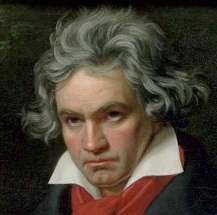THEORY OF LITERATURE
Burke (1729-1797; 1757 “A Philosophical Enquiry into the Origins of Our Ideas of the Sublime and the Beautiful)
-
‣Foregrounds the sublime; cognitive paralysis (549-550)
-
‣Sublime (chasm)
-
‣Partially in the viewer (1a), subjective and objective
-
‣Certain qualities: large, obscure, terrible, craggy, disjointed, powerful (550)
-
‣It is, in short, coded as masculine (Romantic); difficult (approaching impossible)
-
‣Beautiful (flower)
-
‣Primarily in the thing, an objective quality (3b)
-
‣Certain sensible qualities: small, delicate, weakly colored, smooth, harmonious (4a-5b)
-
‣It is, in short, coded as feminine (neoclassical); easy to understand
-
‣The sublime is essentially beyond us, a proof of the overwhelming Romantic power of Nature, and of the inspirational vanquishing of the intellect (see Leopardi, Coleridge, Shelley, etc.)
Kant (1724-1804; 1790 Critique of Judgment)
-
‣Like the beautiful, the sublime is the recognition of a particular relationship between certain mental faculties (imagination and understanding), one that should be universal.
-
‣Unlike the beautiful, the sublime is the recognition of a disharmony within the mental faculties: the imagination (intuition) fails, but the understanding succeeds (522).
-
‣Examples: space, time
-
‣Pyramid of the Sun at Teotihuacan, Mexico
-
‣Size of the Earth (the eye cannot take it in); Jupiter; the Sun; but these things are relatively small!
-
‣Imagination equally fails at vast time. Is 5 days v. 6 different for you? How about 5,137 days v. 5,138? 65 million years v. 66 million years? Do you have any intuition (imagination, sense) of that difference?
-
‣Return to examples: I can measure, divide, compute. I can figure out the volume of the visible universe. My imagination quails at such an impression, but my understanding (my reason) triumphs: “sublime is what even to be able to think proves that the mind has a power surpassing any standard of sense” (522).
-
‣What is ∞ + -∞? A “mathematical sublime.” This is the universal within the sublime: we discover that we can think of infinity, which “surpasses any standard of sense” (524), even though the sublime object (the ocean, our Sun) seems to gesture toward the infinite—hence a “supersensible substrate… underlies both nature and our ability to think” (524-25).
So why not use the sublime as the foundation for the aesthetics?
Observations
-
‣Kant betrays a certain unease, even inconsistency, with the notion of the sublime: glaciers are sublime, but “nothing that is an object of the senses” can be sublime; it gives pleasure and pain; it is disobedient but gives rise to a respect for law; it produces a harmony, but one based on inadequacy, contrast and conflict (526); in general, the sublime appears as something that must be managed, domesticated, or reduced within his aesthetic economy.
-
‣Kant’s sublime is political (519); despite its failure (“utter lack” (521)) to demonstrate anything purposive or law-governed in nature, Kant still ultimately claims that the sublime ultimately produces a feeling of respect—specifically respect for the law (525). For the sublime subject in Kant, the result is a feeling of inadequacy—one desperately wishes to obey the law and yet cannot. (This is strictly speaking Kafkaesque: “it is beyond our ability to attain to an idea that is a law for us” (525). There is a law, but we cannot know what it is. We want to obey it, but we cannot. Just refer to Kant as K from now on…). The sublime—much more than the beautiful—also demarcates the savage from the civilized, the altruistic scientist from the ignorant peasant (529); it prevents “the humanity in our person from being degraded” (527). Without the aesthetic sense you cannot “lay claim to the name of human being” (530); in general, the aesthetic sense allows us to “assess the value of other people.” There goes your universal human rights and autonomy…
-
‣Kant’s sublime is a supplement (521); “not as important and rich,” a “mere appendix,”—at times it threatens to disappear entirely: “That is sublime in comparison with which everything else is small.” But everything can be compared to something larger, hence: “Nothing that can be an object of the senses is to be called sublime” (522).
-
‣Kant’s sublime seems to carry a risk of death (520), but one that he refuses to call such (in general, he is often reticent about the sublime). It is “contrapurposive,” but Kant is at pains to demonstrate that this contrapurposiveness is entirely within us (521) and not in fact a flaw within the universe.
-
‣Kant’s sublime is jouissance, enjoyment (523), a “negative pleasure” (520), a pleasure in pain (525). It is as attractive to reason and understanding as it is “repulsive to mere sensibility” (526). Could we get hooked on the sublime?

